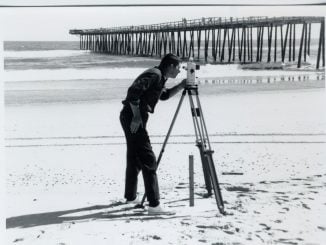
If you enjoy watching meteor showers, the folks at NASA are expecting as many as 200 meteors per hour during tonight’s peak of the Perseid meteor shower that graces our sky every August.NASA says it expects this year’s show to be one of the best potential meteor viewing opportunities of the year.”Forecasters are predicting a Perseid outburst this year with double normal rates on the night of Aug. 11-12,” said Bill Cooke, from NASA’s Meteoroid Environment Office. “Under perfect conditions, rates could soar to 200 meteors per hour.”The association says that the last Perseid outburst, which is a shower with more meteors than usual due to the debris trail passing closer to Earth, occurred in 2009. The Perseid meteors travel at roughly 132,000 miles per hour, peaking at temperatures ranging from 3,000 to 10,000 degrees Fahrenheit in the Earth’s atmosphere. In other sky-watching news, scientists from Appalachian State University believe they have captured images of the mysterious “Brown Mountain Lights,” the folkloric lights with stories that date back over 100 years in the Morganton area of North Carolina. The scientists, Daniel Caton and Lee Hawkins of the physics and astronomy department at App State, used two time-lapse digital cameras near Brown Mountain on the night of July 16 to capture the footage.”This is the first time we’ve had a dual detection (on both cameras),” Caton said. “It was something out there. It came on and went back off virtually instantly four times over several minutes. We’ve eliminated all the things that are likely man-made natural sources, so we’re left with no real explanation other than it’s whatever the lights might actually be.”Caton has been attempting to capture such footage since 2011. Theories of what may cause the lights range drastically from ball lightning to naturally occurring gases rising from the mountain to even more out-there cosmic possibilities. “It’s intriguing,” Caton said. “I was about ready to give up, so this was one of those moments when you look at the screen and go, ‘What was that?’ It’s the first time we’ve captured something that we can’t easily explain.” To check out YouTube videos of the spotting, click here and here for footage from each of the cameras.



